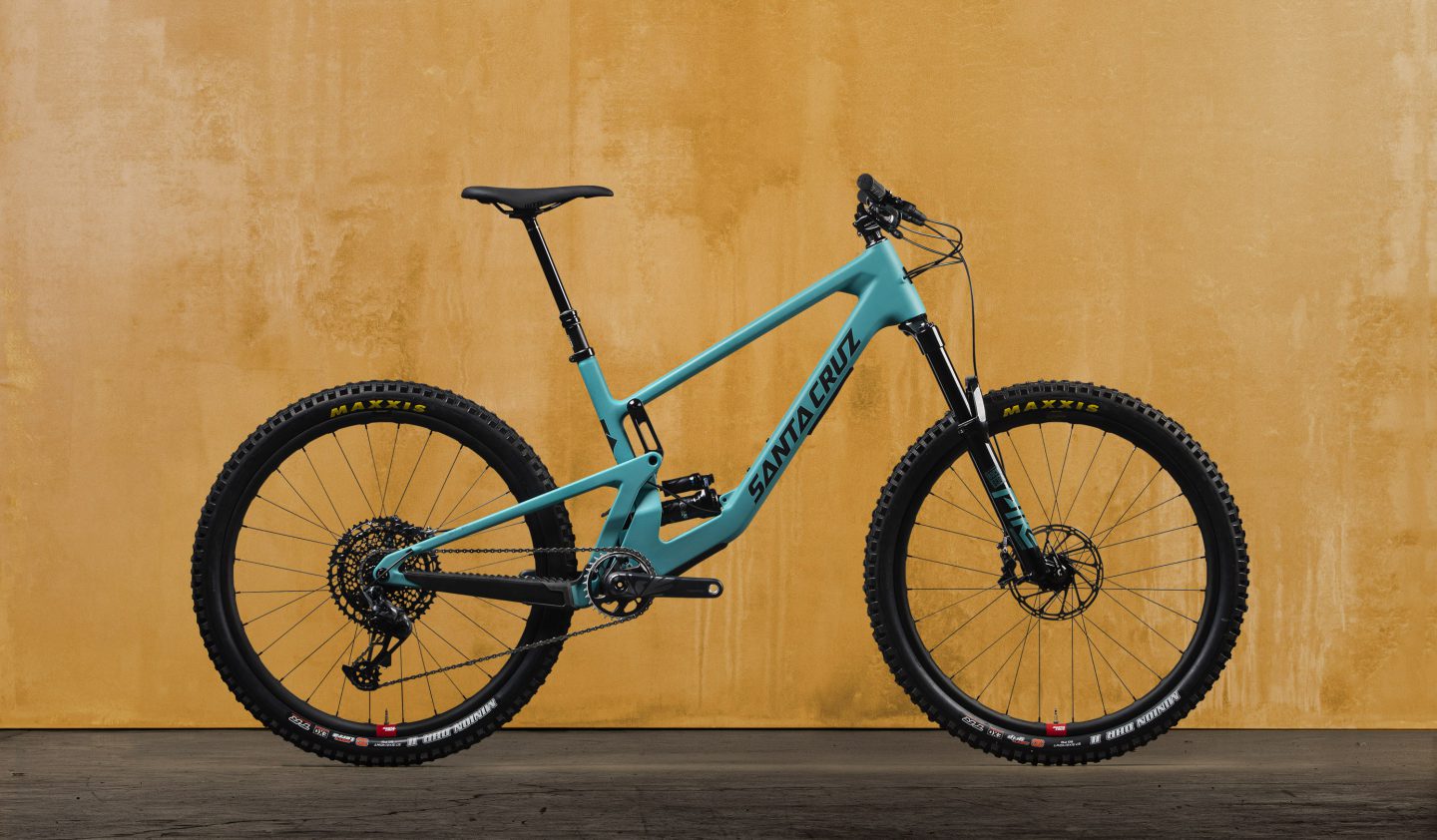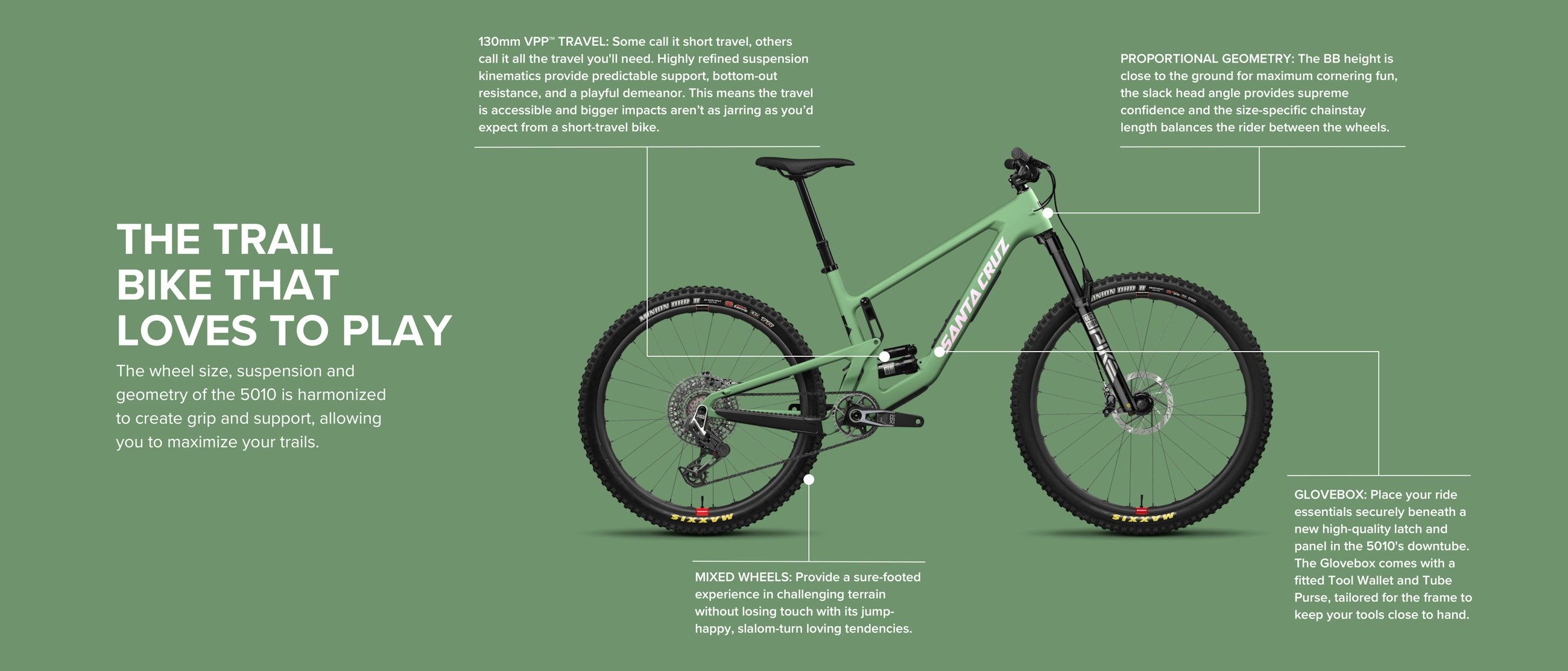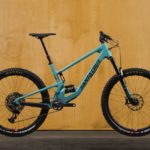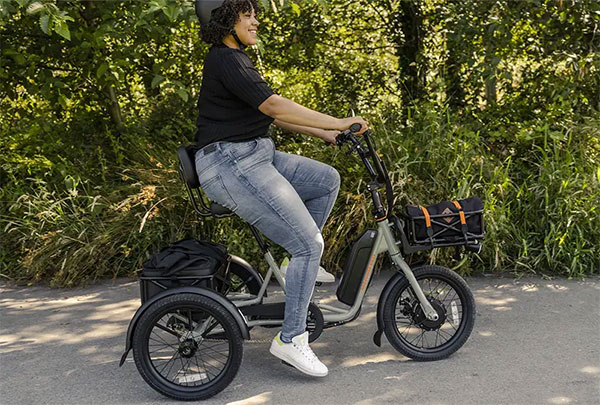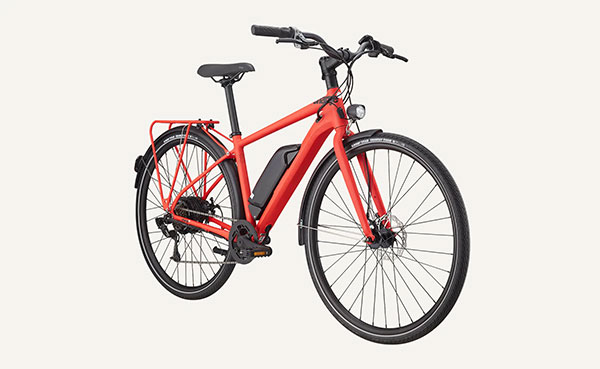Santa Cruz 5010 is a playful, nimble, and capable rider-favorite carbon trail bike. The new version is rowdier, slacker, and even more fun than before.
Santa Cruz describes the 5010 as an all-terrain trail bike that has a place in every mountain biker’s collection. The reason is that this is a bike that maximizes fun and unlocks new trail-shredding skills and possibilities—so who wouldn’t like that?
The 5010 received an update in 2020 so now it comes with even more progressive geometry, two carbon frames, 140/130mm (f/r) of travel, 27.5″ wheels, and the distinctive lower-link mounted shock configuration.
If you’re looking for a versatile carbon ripper that can do a little bit of everything, you’ll be interested to hear what we have to say about Santa Cruz 5010. Find out why we like it so much.
Quick Overview
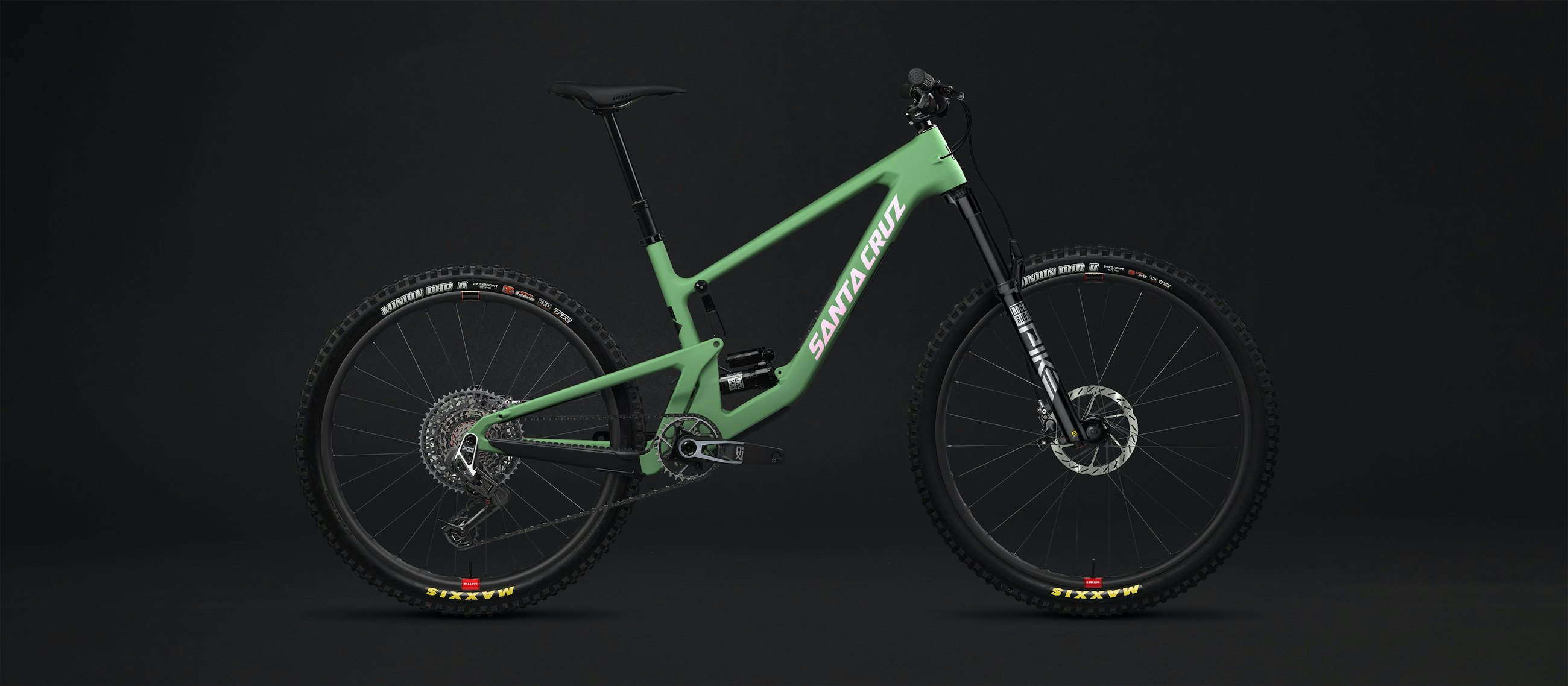
The new 5010 is now more capable and more balanced than ever before. However, that did not leave it without the recognizable fun factor. This is a bike that’s predictable and easy to control, yet able to surprise you with its hidden quirkiness.
Santa Cruz 5010 is an incredible climber thanks to the low-slung VPP suspension layout, which is now almost ubiquitous for all Santa Cruz FS bikes.
Moreover, like all other models from this Californian brand, the 5010 is not cheap. The pricing starts at $4,099 and goes up to $6,899, which is steep but not surprising at all.
This bike is available with two types of carbon frames and four builds:
- SRAM NX Eagle / Carbon C / 27.5
- SRAM GX Eagle / Carbon C / 27.5
- Shimano XT / Carbon CC / 27.5
- SRAM X01 Eagle / Carbon CC / 27.5
According to Santa Cruz, the frames differ only in weight. The stiffness, strength, and performance are completely the same, but the Carbon C frames are slightly heavier than the Carbon CC variation.
The good news is that the 5010 model has proportional chainstay lengths (424–433mm), so every rider will get the same balanced geometry, regardless of their height.
In addition to the lower-link VPP suspension system, each 5010 build gets 140/130mm (f/r) of travel with a mixture of Fox and RockShox forks and rear shocks.
Main Highlights
- Two types of carbon frames.
- Four 12-speed builds.
- 27.5″ wheels.
- Maxxis Minion DHR II 2.4″ tires.
- Alternative Santa Cruz Reserve 30 Carbon Rims.
- Carbon riser bars on Carbon CC frames.
- Fox and RockShox suspension, 140/130mm (f/r).
- Proportional chainstay lengths.
- Low, slack, and long geometry.
- Virtual Pivot Point (VPPTM) Suspension Design.
Frame
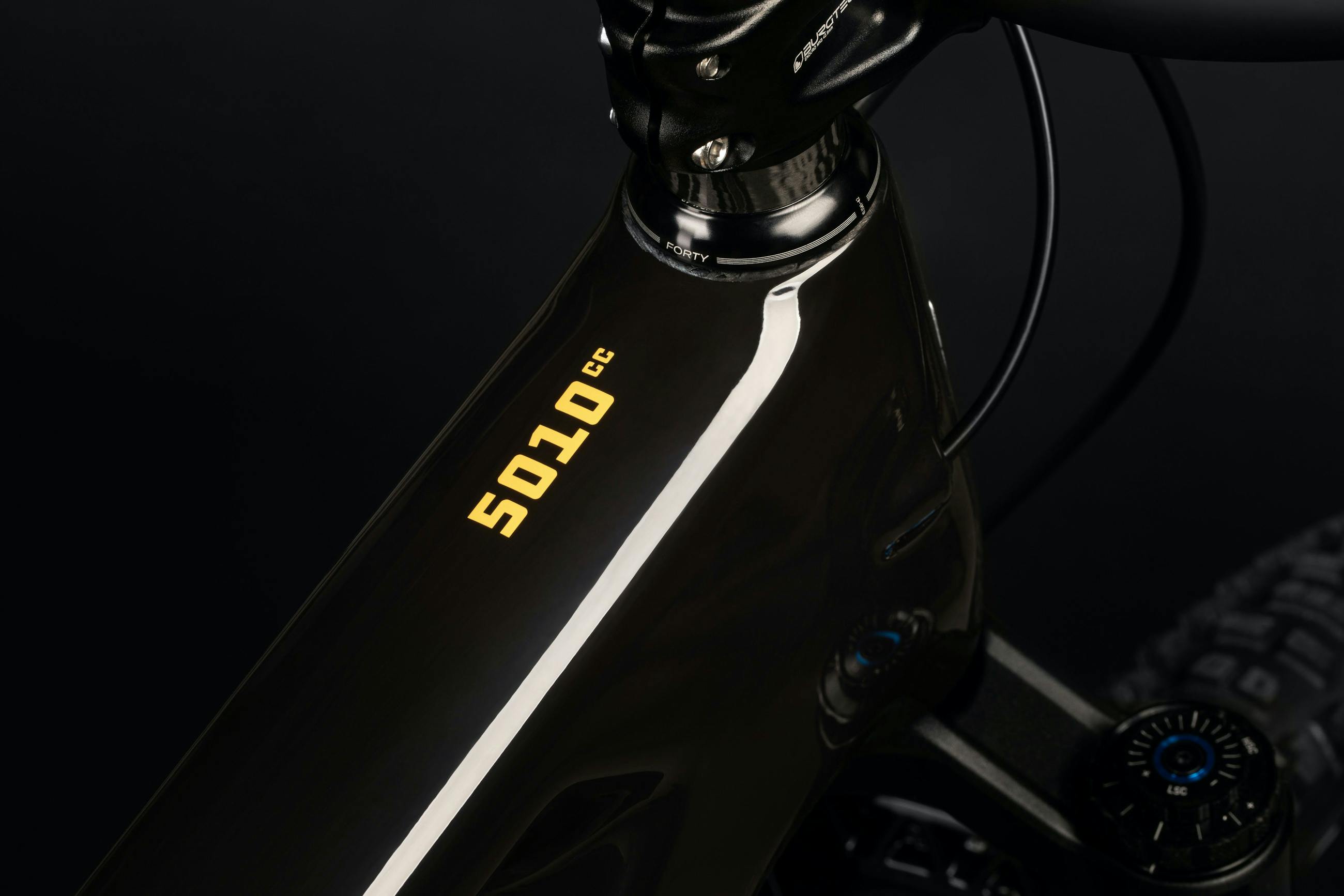
Unlike the old 5010, the new version is only available in carbon. However, you still have a choice between two types of carbon frames—Carbon C and Carbon CC. As mentioned previously, the only difference between the two is the weight.
Of course, the frame, bearings, and the Santa Cruz Reserve carbon wheels come with a lifetime warranty. The frame is now even easier to service, as the bearings are placed inside the linkage instead of the frame. Plus, the traditional threaded bottom bracket is extremely easy to service as well.
Santa Cruz 5010 features cleverly integrated protection pads along the length of the driveside chainstay, under the bottom bracket, and a shuttle guard on the downtube.
You can also say goodbye to rattling cables as Santa Cruz has implemented separate tunnels for internal cable routing.
Suspension
First and foremost, it’s important to note that Santa Cruz 5010’s suspension is built around the lower-link VPP (Virtual Pivot Point) technology. The bike now gets 140mm of travel on the fork and 130mm on the rear shock.
Even though this is the same amount of travel as before, Santa Cruz claims that the leverage curve is now more progressive. Also, the design will work equally well with coil-sprung and air-sprung shocks.
According to Santa Cruz, the suspension design is now easier to set up, easier to service, so 5010 offers predictable handling and better descending capabilities.
Each build gets a different combination of Fox and RockShox forks and shocks, going from Fox Rhythm 34/Fox Float Performance DPS on the cheapest build to RockShox Pike Ultimate/RockShox Super Deluxe Ultimate on the most expensive build.
Components
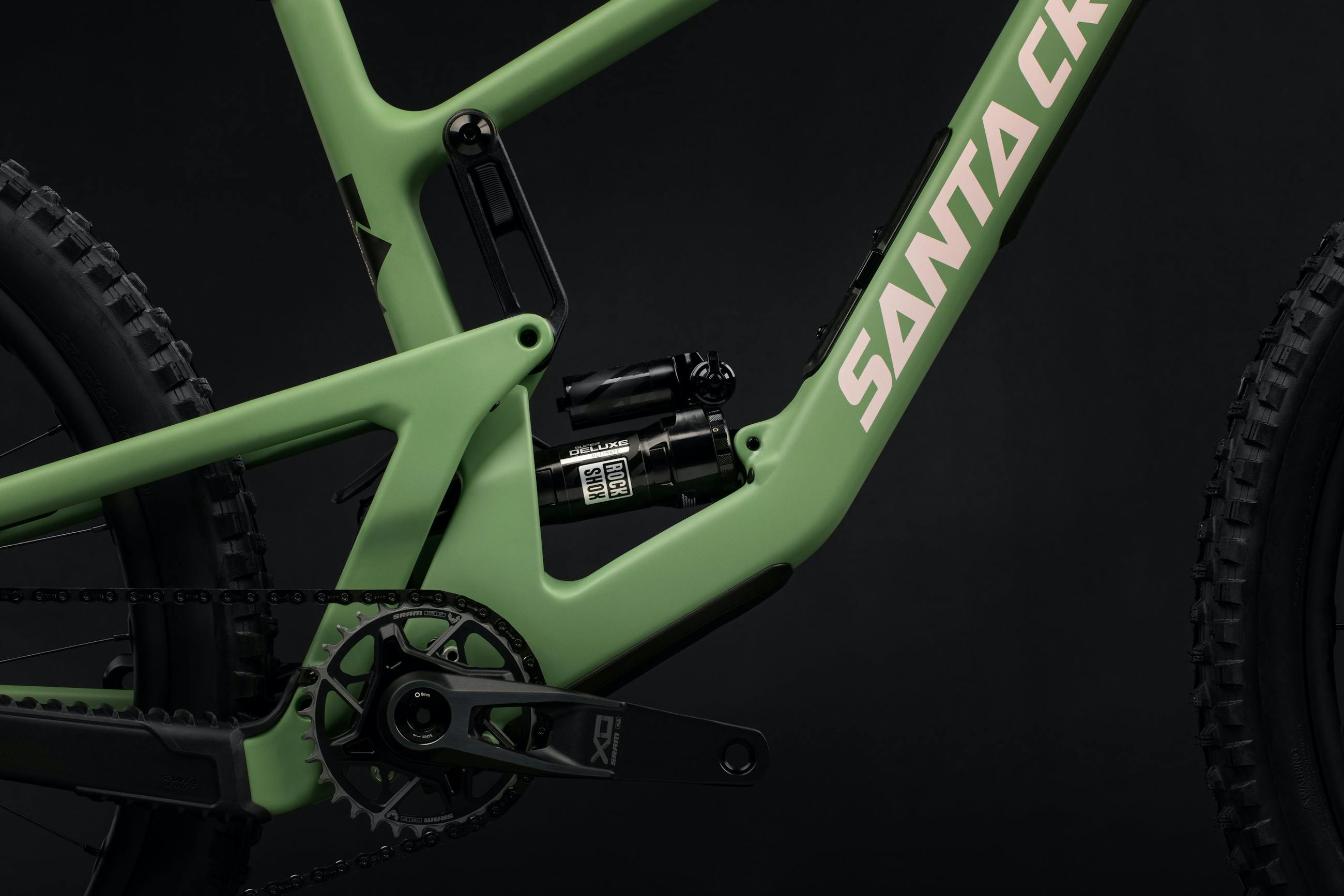
Component-wise, the 5010 gets a range of mid-level to high-end components, depending on the price. All four builds have 1×12 drivetrains with NX Eagle, GX Eagle, XT, or X01 groupsets.
Respectively, each build also gets a different brake set—SRAM Guide T, SRAM G2 R, XT M8120, or SRAM G2 RSC. However, all four feature 180mm rotors.
When it comes to the wheels and tires, Santa Cruz 5010 rolls on Maxxis Minion DHR II 27.5 x 2.4″ tires. These are wrapped around WTB or Race Face rims, but Santa Cruz’s in-house Reserve 30 Carbon rims are available as well with the Carbon CC frames.
Each build also gets a dropper post and WTB Silverado Race, Pro, or Team saddle. All bikes are available in Raspberry Sorbet and Loosely Blue paint jobs.
Geometry
The 2020 update is the fourth generation of the 5010, which means this Santa Cruz model has come a long way. The best adjectives you can use to describe this bike’s geometry are low, slack, and long.
The chainstays are quite short which helps the bike to steer better and improves balance for the rider. The proportional chainstay length varies from 424mm to 433mm, which provides an ideal position with every frame size.
The 5010 has a 65.4° head tube angle and a 77.5°–76.6° seat tube angle. However, thanks to the flip-chip in the shock mount, the head angle, seat angle, and bottom bracket height can be further adjusted.
The 5010 also has low standover clearance and a short seat tube that lets you fit dropper posts with more travel. These are all clever solutions that will make your trail adventures more fun and your PRs better than before.
Santa Cruz 5010 Sizing
The 5010 is available in five frame sizes that fit a wide range of riders. Check out the chart below to find the perfect size for your height.
- X-Small: 4’8″ — 5’0″ / 142 — 152cm
- Small: 5’1″ — 5’5″ / 155 — 165cm
- Medium: 5’5″ — 5’9″ / 165 — 175cm
- Large: 5’9″ — 6’1″ / 175 — 185cm
- X-Large: 6’1″ — 6’4″ / 185 — 193cm
How Does Santa Cruz 5010 Compare to Similar Bikes?
If you’re in two minds and can’t decide whether to get the 5010 or another Santa Cruz model, here’s a quick comparison that will help you choose.
Santa Cruz 5010 vs. Bronson
Both Santa Cruz 5010 and Bronson are 27.5″ trail bikes, but they differ in the amount of travel, 130mm vs. 150mm on the rear. The Bronson also comes with an aluminum frame, in addition to the Carbon C and Carbon CC frames that the 5010 comes with. However, both bikes have the VPP suspension design and similar geometry, though Bronson is available for less money.
Santa Cruz 5010 vs. Tallboy
Santa Cruz 5010 and Tallboy differ in terms of frame material, wheel size, and suspension travel. The Tallboy is available with aluminum and carbon, whereas the 5010 only comes with carbon. Moreover, the Tallboy has 29″ wheels and 120mm of rear travel, while the 5010 has 27.5″ wheels and 130mm of travel.
Other Mountain Models
FAQ
What type of bike is Santa Cruz 5010?
Santa Cruz 5010 is a versatile trail bike that can be used for different types of trail riding. This is a lightweight carbon bicycle with a performance-oriented build that can be used by professional riders or serious amateur riders. It excels at climbing, descending, and rides with lots of pedaling.
What is the Santa Cruz 5010 good for?
Santa Cruz 5010 is an all-around bike that can do a little bit of everything. It feels at home when ridden on rowdy singletracks, steep descents, and even steeper climbs. It has a long, low, and slack geometry that’s extremely stable, so you can use it for racing or training.
When did the Santa Cruz 5010 come out?
Santa Cruz 5010 first came out in 2018, but this model has undergone multiple changes since then. The bike still has the fun-oriented 27.5″ wheels, but the geometry is now a lot more modern. Today, 5010 is slacker, lower, and longer, which makes it more capable than before.
Why Santa Cruz bikes are expensive?
Santa Cruz is a boutique brand that focuses on quality rather than on quantity. Most of its bikes are made with premium Carbon C or Carbon CC frames that are super lightweight and stiff. Santa Cruz’s bikes are also jam-packed with advanced technologies which also raises their price.
How heavy is a Santa Cruz 5010?
Santa Cruz weighs between 31.34 lbs and 29.55 lbs, depending on the build you choose. The heaviest model is the one with SRAM NX components, whereas the lightest build features X01 Eagle components. The price difference between the two is pretty significant as well.
Does Santa Cruz 5010 come tubeless?
Santa Cruz 5010 ships with tubeless rim tape and valve stems installed and ready for use. All you need to do is pour sealant into the tires and inflate them. The good news is that Santa Cruz ships 5010 with Stan’s Sealant included, so you can ride in no time.
Final Verdict
To sum things up, Santa Cruz 5010 is a fantastic all-around trail bike that can shine on different terrains and different types of rides.
The latest iteration has fun and agile handling that easy to control and predict. Thanks to the VPP suspension technology, the 5010 now climbs and descends even better than before.
We love the frame, both the design and the geometry, as it’s lightweight and fits all types of riders equally well. Plus, the list of components reflects the price well and offers good value for the money. That’s not to say that the 5010 is not expensive, because it definitely is.
However, if you want a fun and playful mid-travel trail bike that can do a little bit of everything and meet all your MTB necessities, Santa Cruz 5010 is a strong candidate.

